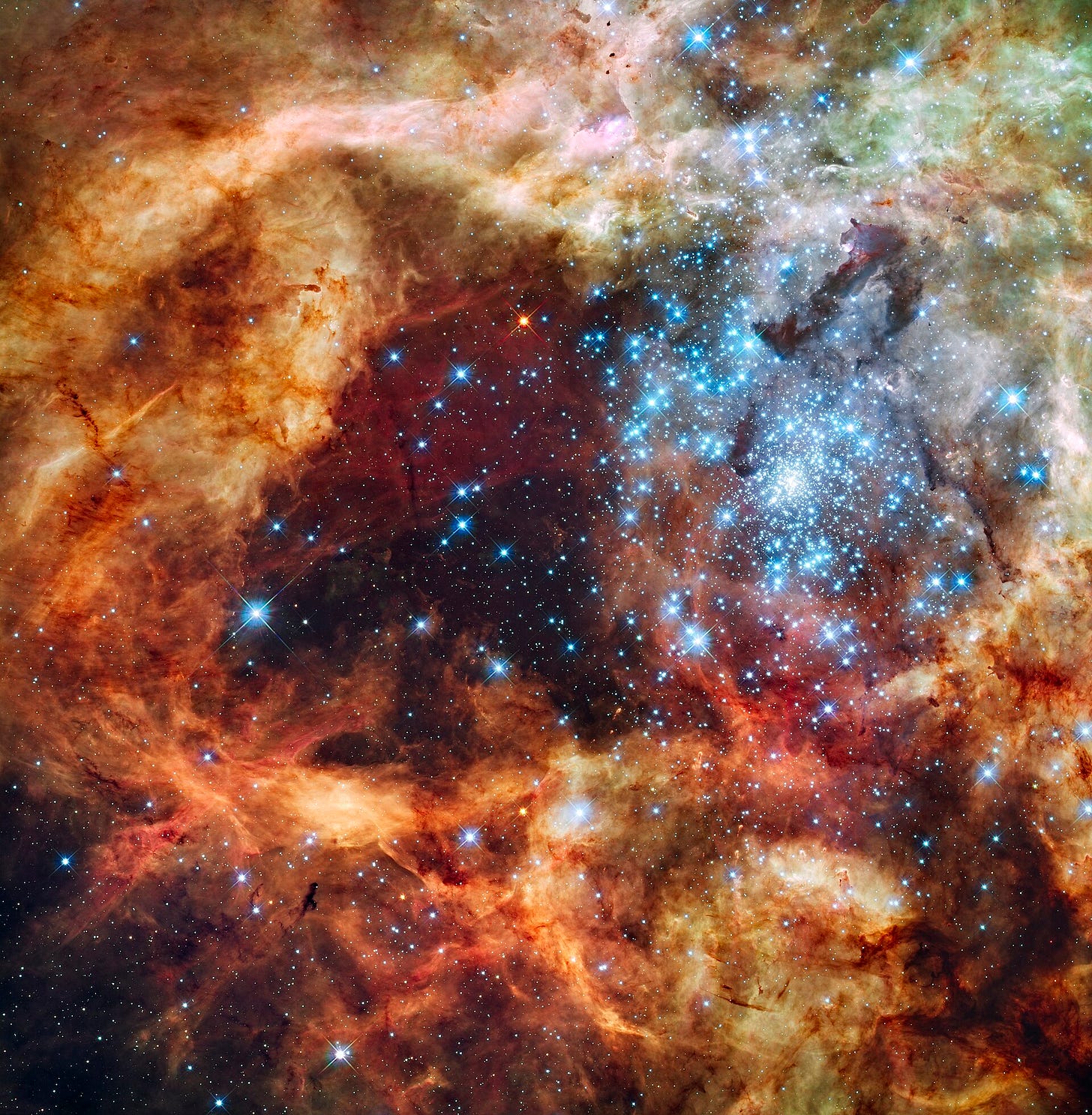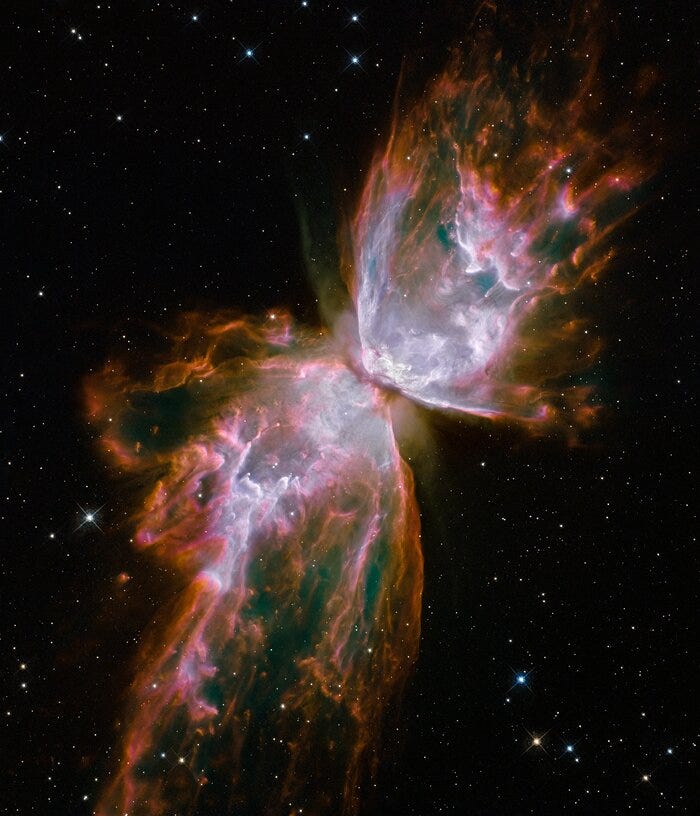This is an entry from an astronomy-themed devotional I’m writing.
By the sweat of your face you shall eat bread, till you return to the ground, for out of it you were taken; for you are dust, and to dust you shall return. — Genesis 3:19
In this passage, God humbles Adam with a stark truth: he is formed from the dust of the earth, and to that dust he will return in death. Cast out of Eden for his disobedience, Adam toils in the dirt that mirrors his own fleeting frame. It’s a sobering lesson in humility etched into Christian history. Yet this is a story astronomers understand, too.

Carl Sagan famously declared we are made of “star stuff.” It sounds poetic, but it’s a literal truth: the Earth, and thus our bodies, are forged from materials processed by stars. A key ingredient of that star stuff is dust—microscopic grains of carbon, silicates, and metals, cast off by dying red giants in their final gasps of stellar life. This dust weaves through the Milky Way, tracing dark lanes across its spiral arms and shrouding stellar nurseries, like the one above, in extravagant, shadowy patches. It’s an integral part of the endless cycle of stellar and planetary birth, death, and rebirth—the very substance of the Earth and, by extension, our physical nature.

So, when God reminded Adam that his body was as lowly as the ground beneath his weary feet, He also sowed a revelation for Adam’s descendants. In the 20th century and beyond, we’ve learned our material selves are tied to the countless stars of the Milky Way—an exalted origin within our humble circumstances. When our earthly lives end, our bodies won’t merely return to the soil; they will rejoin a cosmic rhythm of creation, a cycle stretching across seemingly endless millennia, transforming the universe’s simplest elements into the stuff of life.


But this cycle isn’t eternal. To us—small, short-lived creatures in an immense and ancient cosmos—it seems endless. Yet the stars will one day fade for good, their dust finally depleted, unable to yield life—unless God intervenes first. And we are told that He will intervene, renewing the heavens and the Earth, likely long before creation winds down to its own predicted death.
Then I saw a new heaven and a new earth, for the first heaven and the first earth had passed away … And he who was seated on the throne said, “Behold, I am making all things new.” —Revelation 21:1-5
I treasure Genesis 3:19, because it offers two profound truths. First, that our material existence is frail and fleeting. If we want eternal life, we must anchor our loyalty not to the temporary material world, but to the eternal God who created it all. Second, we are both humbled—by the stain of sin and our transient nature—and exalted—by His redeeming grace and the star-stuff that constitutes our flesh and blood. Yes, we are made of dust, but that dust is the stuff of the heavens, harvested from generations of stars.
Though we bear Adam’s mark, washed clean only by the blood of Christ, our eternal souls are temporarily clothed in the stuff of stars—fitting garb for heirs of God’s everlasting kingdom.
Scriptural Foundations
“All go to the same place; all come from dust, and to dust all return.” —Ecclesiastes 3:20-21
“Therefore we do not lose heart. Though outwardly we are wasting away, yet inwardly we are being renewed day by day. For our light and momentary troubles are achieving for us an eternal glory that far outweighs them all.” —2 Corinthians 4:16-17
Liked this article? Share it with a friend who’d enjoy the science-and-faith conversation. If you’re a free subscriber who would like to support my work, you can upgrade to a paid subscription (which comes with some perks).





Sarah, this is a wonder-filled and encouraging post. Thank you!
Praise to our Lord God!